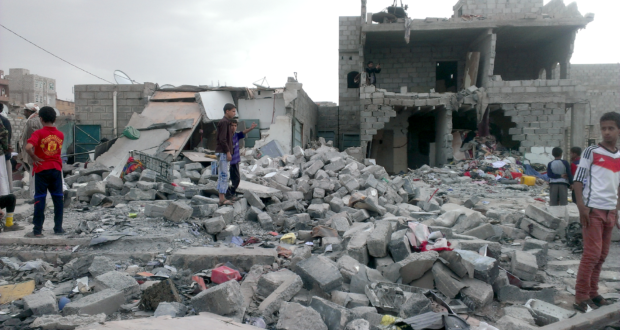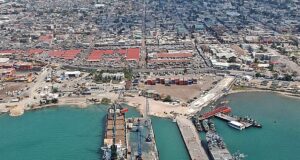12 July, 2022
by Sam Biden, Global Leadership Fellow
As the 8th anniversary of the Yemeni Civil war approaches, hope to bring the bloody and brutal conflict to an end appears bleak. The parties to the ongoing conflict continue to demonstrate a crude ignorance of the population’s safety, the preservation of stable public order and resist initiatives to resolve worsening humanitarian state of the civilian population, now totalling 20.7m people in desperate need of aid. The HSC has today published an update on the situation in the country, which can be read in full here:
Summary
Conflict development
- The Stockholm and Riyadh agreements were signed between the conflicting parties. The agreements focused on the inclusion of ceasefires or ‘truces’, prisoner swaps, redeployment of troops and the formation of a new technocratic government. Despite the signatures to the agreements, ceasefires and truces were broken within weeks of the declarations being signed.
- Consultations in 2022 fell on similarly deaf ears as the Houthis refused to attend or negotiate despite an invitation from the Gulf Cooperation Council.
- Efforts to iron out the continuous political and theological rivalry have consistently failed, worsening the already disastrous circumstances innocent civilians have reluctantly found themselves in.
Food Security
- Rates of General Food Assistance (GFA) distribution rose between 4-9% in 2020-2021 alone. Nutrition Assistance (NA) was successfully deployed to 88% of a 3.3m person target set by the World Food Programme.
- Despite the continual efforts of international food programmes, 4m people are classified as in a ‘food crisis’ as of 2022. Of these 17.4m people, an expected 161,000 will be in catastrophic famine by June 2022.
- 45% of all districts in Yemen are in an ‘emergency’ state of food security. When compared to 2017 figures, the number of civilians in an ‘emergency’ or ‘catastrophic famine’ rose a staggering 86.3%.
- Inflation and the de facto blockade have continued to prevent fresh food ingredients from entering Yemen, particularly wheat. Families now spend an average of 45% of their income on food while total imports steadily increased from 2020-2022. Despite the increased imports, many families can simply not afford food.
Water security
- Water consumption rose 18.6% between 2013-2020 while the consumption-to-production ratio reached 65.6% in 2020, leaving 35.4% of people with essentially zero water access.
- The conflicting parties have consistently targeted water sanitation facilities in recent years, causing asset damage to 73% of these facilities, totally destroyed equipment represented 72.7% of total asset damage and 49.1% of total facility damage with the remaining 50.9% being partial damage.
- These facilities are essential for water pumps, sanitation and general water distribution, if they cannot function, they cannot supply water to those in need.
Disease
- By 2021, the contraction rate of Cholera fell significantly, with a fatality ratio of 0.06% by mid-2021. However, oral vaccines for Cholera were cancelled or blocked under the guise of how ‘mass immunisation’ would surely fail.
- Diphtheria cases soared in 2020 at 30,000 people a month became infected, in 2019 the average per month infection rate was below 10,000. The fatality rate amongst vulnerable groups hit 11% while 54% of the population were vaccinated by 2020.
- COVID-19 had little effect on the Yemen population. By March 2022, 11,803 cases were reported alongside 2,143 deaths. As of December 2021, 05% of the Yemen population are fully vaccinated while 1% have received an initial dose.
Children
- A staggering 10,200 children have been killed during the conflict, primarily being committed by the Houthi, Saudi-led coalition and Yemeni armed forces.
- The UN estimated 2,000 Houthi child soldiers had died during combat, with a predicted 18,000 recruited overall.
- The Houthis implemented a new ‘action plan’ in collaboration with the UN Children Agency. They aimed to rid their recruitment and use of child soldiers, aiming to end all use within 6 months of the agreement.
- Over 136,000 teachers have not been paid a salary in 4 years while 5.6m children are out of primary and secondary education
- ‘Catch-up’ programmes have been implemented allowing students to catch up on years of work in very short periods.
Women & Girls Rights
- Gender-based violence (GBV) continues to plague women and girls with a predicted2m women and 1.9m girls at risk. A further predicted 69.9% of women and 15.1% of girls are victims of GBV.
- Political discrimination hit an all-time high as no women are involved in relevant political bodies. Both the Yemeni Women’s Pact for Peace and Security and Women Solidarity Network (WSN) have continued to campaign for the inclusion of Resolution 1325, resulting in a public announcement by the Ministry of Social Affairs and Labour surrounding how they will implement the Resolution.
- Female-headed households (FHH) hit an all-time high, with 72% of FHHs being below the poverty line. Job training, programmes and job creation have been facilitated by the United States Agency for International Development (USAID), securing 1.3m in loans and providing training to 500 women.
- The Committee on the Elimination of Discrimination Against Women notes the continual non-existence of gender equality in legal matters. The use of stoning, ‘blood money’ and other punishments for adultery are still welcomed.
Civil society & infrastructure
- Fuel scarcity rapidly increased since the outbreak of the Russia-Ukraine conflict, raising fuel costs worldwide. Houthi-controlled governorates are amongst the worst affected with consistent blackouts and 80% of the Public Electricity Corporations’ generation capacity being shut down in Aden.
- Over 20.1m people are in need of medical treatment yet 80% have significant barriers to accessing it. Only 50% of health facilities are fully functional and have significant shortages of human resources, equipment and supplies.
- The ICRC began and continues to supply equipment and funding, opening 8 dialysis centers, 30 primary healthcare clinics and 53 hospitals.
- Aerial attacks on civil infrastructure have ramped up significantly, leaving hundreds dead in the areas of Sa’ada, al-Sawamil, Mustaba & Haijah.
Operational & Security Challenges
- The de facto blockade continues to restrict movement into Yemen’s Sea ports. Food, fuel, medicine and general aid are all heavily affected by the blockade.
- The UN Verification and Inspection Mechanism for Yemen (UNVIM) successfully allowed 405 vessels carrying humanitarian aid to enter Yemen ports with only 21 cancellations, a success rate of over 90%.
- The transport sector deteriorated rapidly. The Houthis successfully militarized the port of Hodeidah and damage to other ports as well as outdated infrastructure means many ports are non-operational.
- Commercial flights were granted clearance to continue for the first time. Sana’a airport successfully launched the first commercial flight in 6 years in 2022. However, airports continued to be key targets for attack, namely Aden airport which suffered two attacks, leaving 22 people dead and over 20 injured.
- Media, NGOs, agencies and the ICRC have all been restricted ground access to perform operations. There is significant evidence of attacks, intimidations, arbitrary arrest and detention, mistreatment and car jackings made against these bodies. Additionally, 1,971 cases of movement restrictions were made in 2020 with an additional 1,114 in 2021. These restrictions heavily disturbed the bodies’ abilities to deliver aid to the civilian population.
 Human Security Centre Human Rights and International Security Research
Human Security Centre Human Rights and International Security Research




